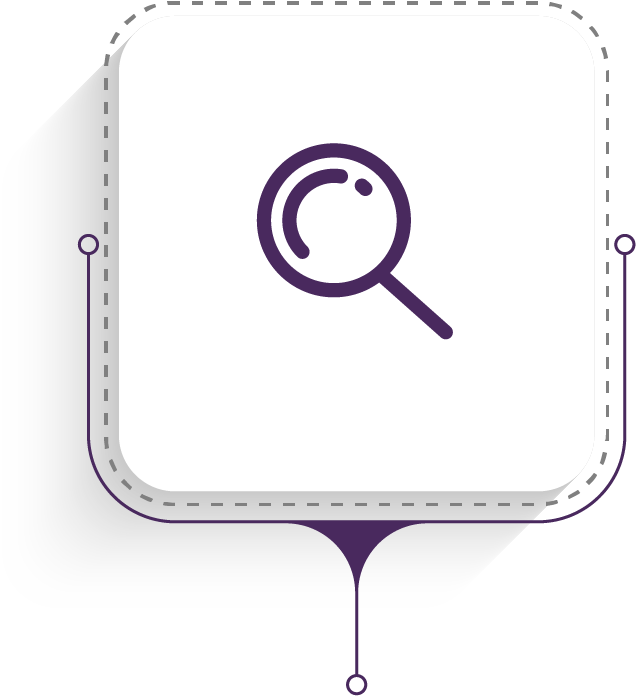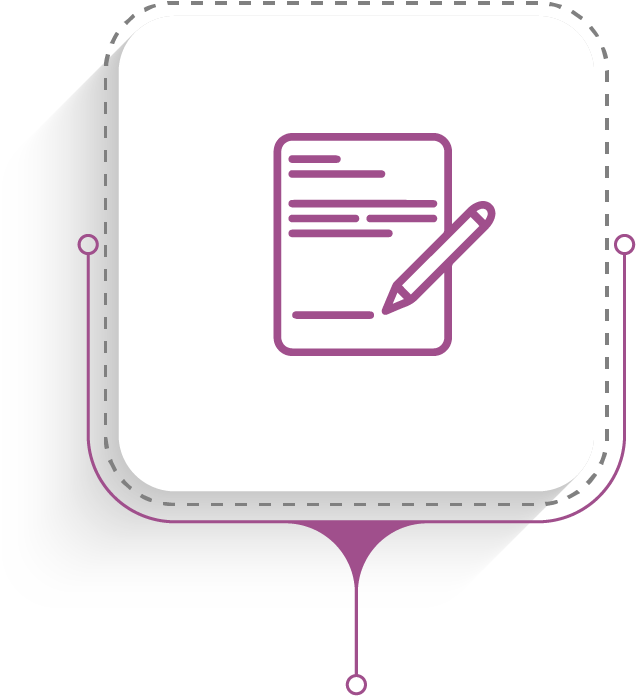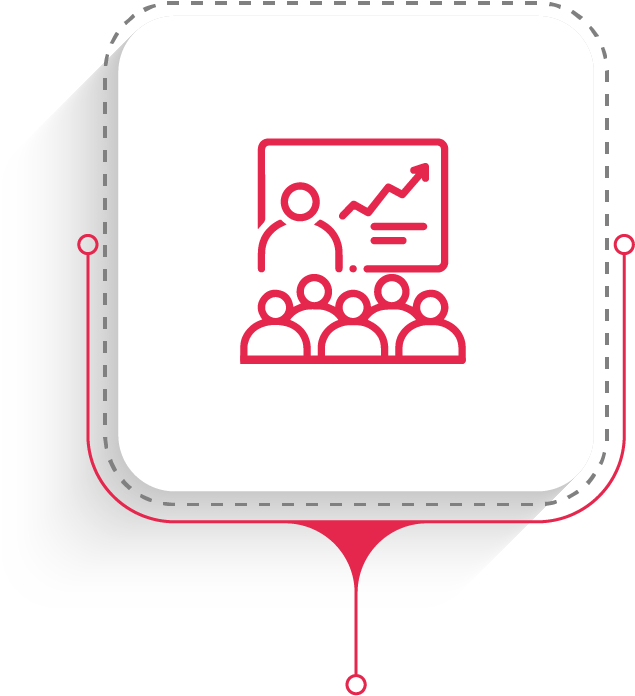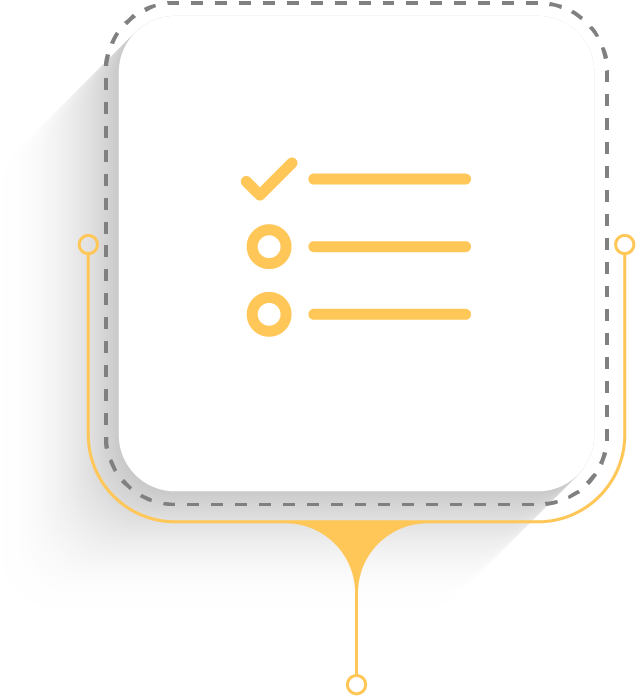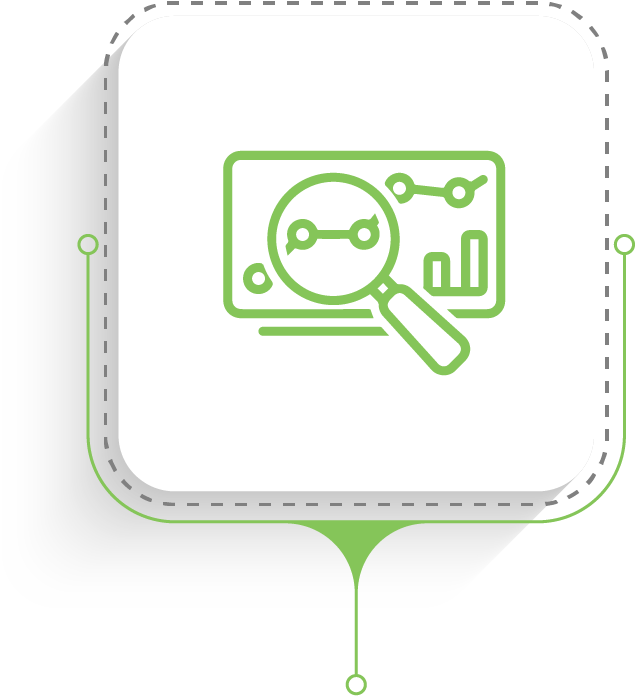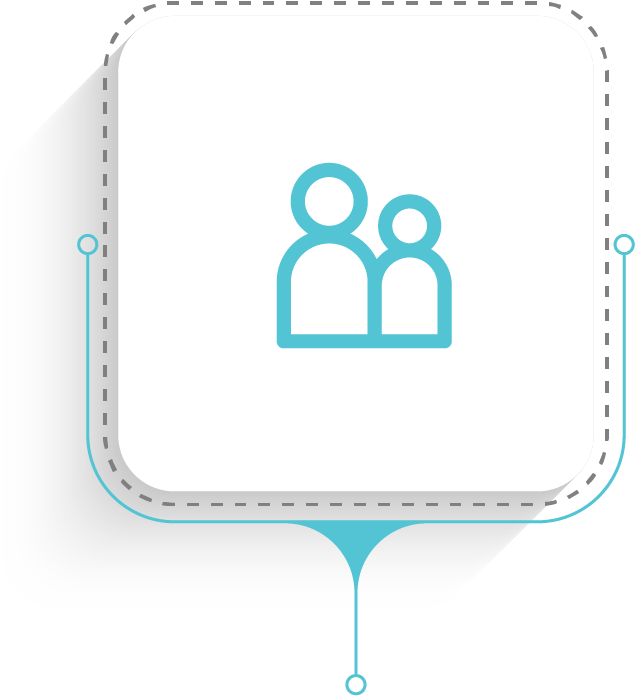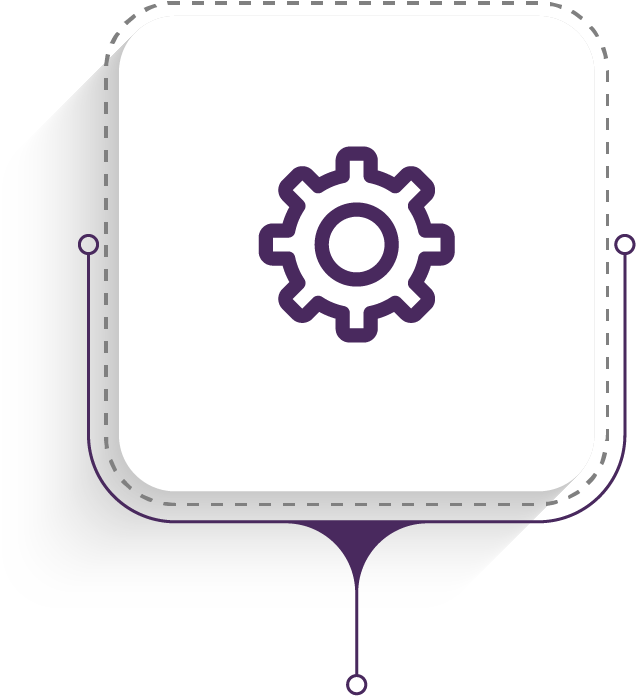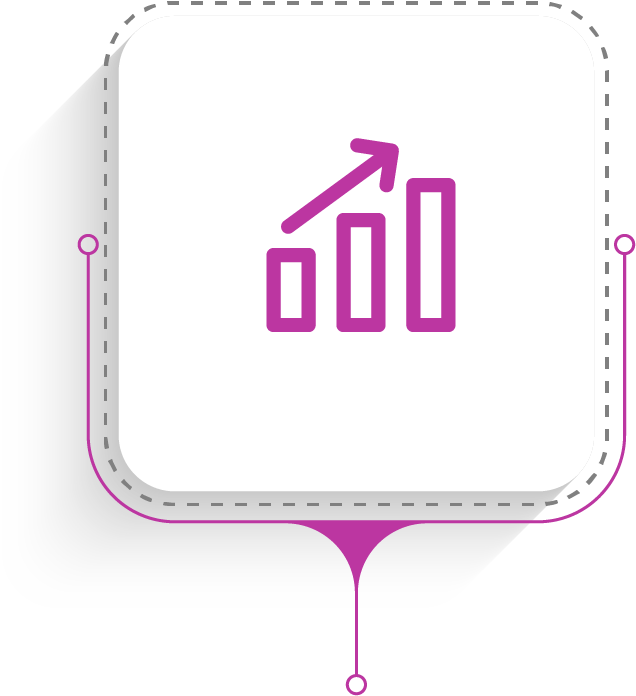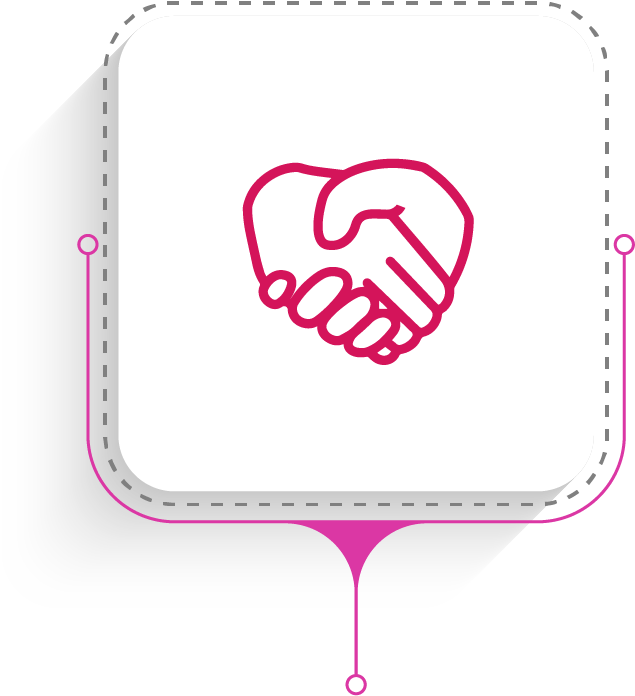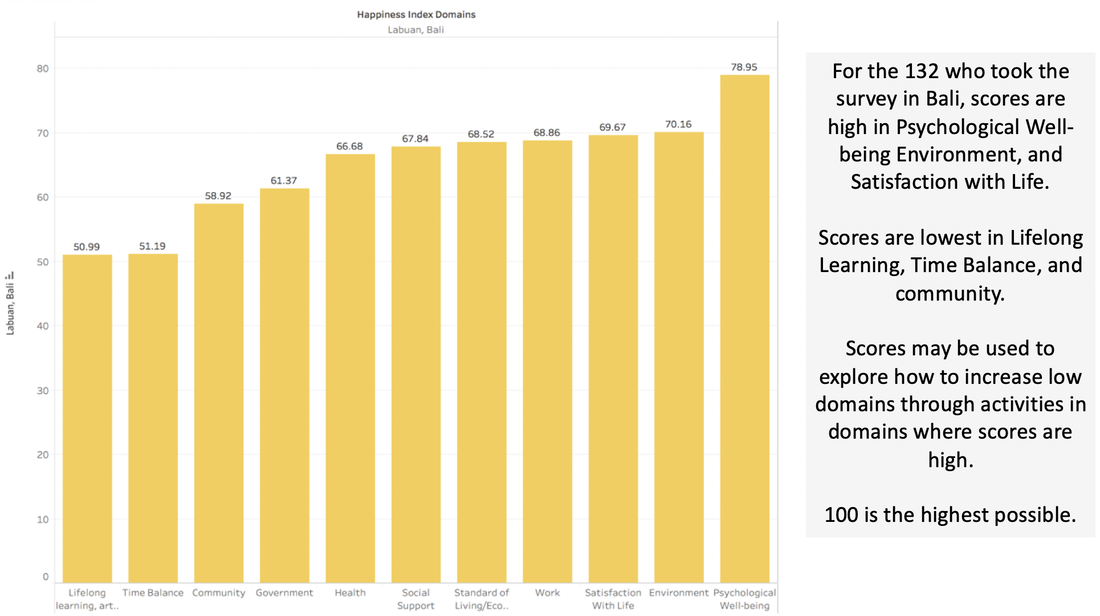OUR APPROACH.
Following the onset of the Covid-19 global pandemic, we aim to partner with destinations and World Heritage sites around the globe to encourage the broadest possible take-up of the Happiness Index.
With our unique one-page score-cards, the Happiness Index provides a direct experience of how well-being is measured inclusive of multiple factors, otherwise known as domains. It allows individuals and communities to measure and compare their quality of life, or well-being with all other survey takers.
It also allows tourism stakeholders to consider the highs and lows of a destination’s well-being (by neighbourhood, if needed) and determine what policies, projects, and actions are needed to strengthen linkages between tourism development and the quality of life of host communities (and target neighbourhoods).
All project data will be open source and available to destination communities, journalists, local and national governments, the private sector, students and their universities, and tourists. Data collection adheres to the strictest data privacy codes.
With our unique one-page score-cards, the Happiness Index provides a direct experience of how well-being is measured inclusive of multiple factors, otherwise known as domains. It allows individuals and communities to measure and compare their quality of life, or well-being with all other survey takers.
It also allows tourism stakeholders to consider the highs and lows of a destination’s well-being (by neighbourhood, if needed) and determine what policies, projects, and actions are needed to strengthen linkages between tourism development and the quality of life of host communities (and target neighbourhoods).
All project data will be open source and available to destination communities, journalists, local and national governments, the private sector, students and their universities, and tourists. Data collection adheres to the strictest data privacy codes.
Watch our video on the ten step approach below.
|
|
THE HAPPINESS INDEX.
Firstly, take the Happiness Alliance's Happiness Index to understand more about the questions asked.
This state of-the-art, OECD recognized survey instrument was developed based on Bhutan's approach to measuring Gross National Happiness (GNH) and is a scientifically validated measurement instrument: Happiness Index Methodology. Our Happiness Index includes 9 original domains developed by Bhutan, with an additional 3 including Satisfaction with Life, Work and Tourism.
The Happiness Index is currently available in 24 languages. If the survey is not available in your language, we provide a soft copy in English and will assist with translation advice and suggestions.
This state of-the-art, OECD recognized survey instrument was developed based on Bhutan's approach to measuring Gross National Happiness (GNH) and is a scientifically validated measurement instrument: Happiness Index Methodology. Our Happiness Index includes 9 original domains developed by Bhutan, with an additional 3 including Satisfaction with Life, Work and Tourism.
The Happiness Index is currently available in 24 languages. If the survey is not available in your language, we provide a soft copy in English and will assist with translation advice and suggestions.
Gross National Happiness Index Domains
|
Community |
Environment |
Life Long Learning |
|
Psychological well-being |
Government |
Health |
|
Standard of Living |
Social Support |
Time Balance |
|
Additional Domains in the Happiness Index
|
|
Satisfaction with Life |
Work |
Tourism |
OUR TEN STEP PROCESS.
Below you will find our Ten-Step Approach summarising our step-by-step process to implementing your Planet Happiness project.
The process is described in greater detail in the peer-reviewed journal article (free PDF available below):
Published by the International Journal for Community Well-being.
The process is described in greater detail in the peer-reviewed journal article (free PDF available below):
Published by the International Journal for Community Well-being.
STEP 1
Convene Project Stakeholders, Identify a Project Manager, Undertake some Preliminary Planning
The first step is to talk to local stakeholders to identify partners and colleagues you can work with to deploy the Happiness Index survey and ensure a good completion rate. This likely involves starting conversations with at least some of the following: local universities, destination management organisations, government departments, tourism associations, chambers of commerce, NGOs, civil society organisations, journalists, clubs, associations, and local schools. Identify a local organisation and person to act as project manager to liaise with Planet Happiness, coordination with local stakeholders and develop a basic plan to move the project forwards.
Convene Project Stakeholders, Identify a Project Manager, Undertake some Preliminary Planning
The first step is to talk to local stakeholders to identify partners and colleagues you can work with to deploy the Happiness Index survey and ensure a good completion rate. This likely involves starting conversations with at least some of the following: local universities, destination management organisations, government departments, tourism associations, chambers of commerce, NGOs, civil society organisations, journalists, clubs, associations, and local schools. Identify a local organisation and person to act as project manager to liaise with Planet Happiness, coordination with local stakeholders and develop a basic plan to move the project forwards.
STEP 2
Memorandum of Understanding with Planet Happiness
Email us at planethappiness@happycounts.org to register your interest to partner with us and we'll forward a short and simple MOU setting out the roles and responsibilities of the local partner organisation and Planet Happiness. The MOU covers training and support to deploy the Happiness Index and report on survey findings. It also gives the local partner access to aggregate data and allows for comparison of data sets between communities. The local partner is issued a unique URL for using the Happiness Index in the host language. This step can involve public ceremonies and press releases. Planet Happiness works with local partner to draft press releases for MOU signings.
Memorandum of Understanding with Planet Happiness
Email us at planethappiness@happycounts.org to register your interest to partner with us and we'll forward a short and simple MOU setting out the roles and responsibilities of the local partner organisation and Planet Happiness. The MOU covers training and support to deploy the Happiness Index and report on survey findings. It also gives the local partner access to aggregate data and allows for comparison of data sets between communities. The local partner is issued a unique URL for using the Happiness Index in the host language. This step can involve public ceremonies and press releases. Planet Happiness works with local partner to draft press releases for MOU signings.
STEP 3
Capacity Building
It's helpful to put together a small team of people to promote Planet Happiness locally and encourage the host community to take the Happiness Index survey. The team might consist of local stakeholders from different organisations or be made up of just one or two organisations such as a local NGO, government or university department. Whatever the composition, it will likely be helpful for the team to learn about the Happiness Movement. This might include, for example, learning about the Happiness Index, why it asks the questions it does, what techniques can be used to maximise local take-up of the survey and how to develop a report card summarising the results of the survey's deployment. The Planet Happiness team advises the local counterpart on training and capacity building options and provides access to reading and on-line resources. An outcome of Step 3 is an action plan to deploy the Happiness Index in your site.
Capacity Building
It's helpful to put together a small team of people to promote Planet Happiness locally and encourage the host community to take the Happiness Index survey. The team might consist of local stakeholders from different organisations or be made up of just one or two organisations such as a local NGO, government or university department. Whatever the composition, it will likely be helpful for the team to learn about the Happiness Movement. This might include, for example, learning about the Happiness Index, why it asks the questions it does, what techniques can be used to maximise local take-up of the survey and how to develop a report card summarising the results of the survey's deployment. The Planet Happiness team advises the local counterpart on training and capacity building options and provides access to reading and on-line resources. An outcome of Step 3 is an action plan to deploy the Happiness Index in your site.
|
STEP 4
Raising Awareness on Site Before deploying the survey on site, it's helpful to raise local awareness about the project and the Happiness Movement. The aim is to encourage people to take the survey. A number of activities can be done to promote awareness including media releases, organising local talks in tea/coffee shops and community-centres, establishing a Facebook page and, for example, screening films about the Happiness Movement. Please see the aspiring video below, demonstrating the amazing steps taken by Brazil's Instituto Visao Futuro to deploy the survey among target communities. |
|
STEP 5
Gathering Happiness Index Data
The Happiness Index is deployed in this step. The initial aim is to gather enough data to start conversations about happiness and wellbeing and show how the data can be used by communities. Initially, we're aiming for sites to gather data from at least 200 residents. Once this target is reached, we'll post and share destination score cards on the website. In this step, Planet Happiness also advises on alternative options to deploy the survey in destinations where the internet isn't available or manual completion of surveys is a preferred method to embrace target communities.
Gathering Happiness Index Data
The Happiness Index is deployed in this step. The initial aim is to gather enough data to start conversations about happiness and wellbeing and show how the data can be used by communities. Initially, we're aiming for sites to gather data from at least 200 residents. Once this target is reached, we'll post and share destination score cards on the website. In this step, Planet Happiness also advises on alternative options to deploy the survey in destinations where the internet isn't available or manual completion of surveys is a preferred method to embrace target communities.

STEP 6
Data Analysis and Reporting
The results from the data gathering are summarised and reported back to the destination community. One-page score cards across the 11 domains allow for quick comparison with all other survey takers (image above left), or between sites. Results across the domains can also be stacked from low to high to illustrate where action may be needed to address deficiencies and strengthen community wellbeing (image above right). One-page score cards are especially useful for media articles to encourage discussion about the project and its aims, both locally and globally. More substantive and focused reports can also be produced from the wealth of data collected through the survey. These reports can be tailored to the needs and interests of different audiences, including the host community local government and for academic purposes.
Click on the Happiness Report Card 2020 to see an example of how survey data can be presented in an engaging format. The focus and content of Planet Happiness reports will vary from site to site depending upon the results harvested and issues shaping destination development. Reports will also be composed comparing results between and across World Heritage sites.
Data Analysis and Reporting
The results from the data gathering are summarised and reported back to the destination community. One-page score cards across the 11 domains allow for quick comparison with all other survey takers (image above left), or between sites. Results across the domains can also be stacked from low to high to illustrate where action may be needed to address deficiencies and strengthen community wellbeing (image above right). One-page score cards are especially useful for media articles to encourage discussion about the project and its aims, both locally and globally. More substantive and focused reports can also be produced from the wealth of data collected through the survey. These reports can be tailored to the needs and interests of different audiences, including the host community local government and for academic purposes.
Click on the Happiness Report Card 2020 to see an example of how survey data can be presented in an engaging format. The focus and content of Planet Happiness reports will vary from site to site depending upon the results harvested and issues shaping destination development. Reports will also be composed comparing results between and across World Heritage sites.
STEP 7
Convening the Community and Gathering Feedback
Convene local meetings and stakeholder forums to discuss the collective results. This might be done through townhall style meetings or on-line. Contrast and compare your collective results with the results of other destinations partnering with Planet Happiness. Through consultation processes, identify what government, businesses and other stakeholders can do to support and strengthen the collective well-being of host communities. Planet Happiness together with its wider partnership network will work with you to support and assist this process.
Convening the Community and Gathering Feedback
Convene local meetings and stakeholder forums to discuss the collective results. This might be done through townhall style meetings or on-line. Contrast and compare your collective results with the results of other destinations partnering with Planet Happiness. Through consultation processes, identify what government, businesses and other stakeholders can do to support and strengthen the collective well-being of host communities. Planet Happiness together with its wider partnership network will work with you to support and assist this process.
STEP 8
Selection and Implementation of Happiness Intervention(s)
Planet Happiness shares with the local team a playbook of suggestions to spark conversations about possible happiness interventions across the 11 domains. A process is designed to share the playbook with residents and gather suggestions for happiness interventions to determine which one(s) should be carried forward to implementation. Policies and activities to implement may be decided by communities, the government or by the tourism private sector. Implementation plans are drawn up and activities implemented, with the focal point sharing information with the Planet Happiness Team.
Selection and Implementation of Happiness Intervention(s)
Planet Happiness shares with the local team a playbook of suggestions to spark conversations about possible happiness interventions across the 11 domains. A process is designed to share the playbook with residents and gather suggestions for happiness interventions to determine which one(s) should be carried forward to implementation. Policies and activities to implement may be decided by communities, the government or by the tourism private sector. Implementation plans are drawn up and activities implemented, with the focal point sharing information with the Planet Happiness Team.
STEP 9
Assessment of Intervention & Happiness Index Iterations
The Happiness Index is deployed in an iterative manner to assess the impact of the activities and intervention(s) that have been implemented. The process to re-deploy the survey retraces steps 4 to 8 above, building upon success stories and, hopefully, greater destination awareness of the project its aims and objectives. The aim over time, is for the survey deployment to move from a convenience to a random sampling approach, thereby using diligently and robustly gathered data to shape and develop a well-being economy shaped by happiness rather financial objectives.
Assessment of Intervention & Happiness Index Iterations
The Happiness Index is deployed in an iterative manner to assess the impact of the activities and intervention(s) that have been implemented. The process to re-deploy the survey retraces steps 4 to 8 above, building upon success stories and, hopefully, greater destination awareness of the project its aims and objectives. The aim over time, is for the survey deployment to move from a convenience to a random sampling approach, thereby using diligently and robustly gathered data to shape and develop a well-being economy shaped by happiness rather financial objectives.
STEP 10
Cross-Site Cooperation & Collaboration
Throughout the Planet Happiness process and approach, learnings will be shared between sites. This will support and underpin capacity building at each step and will be especially helpful in terms of sharing awareness raising activities in Step 4, and interventions that might be designed and implemented in Step 8. Planet Happiness will also strive to convene conferences and workshops (both real and virtual on-line events) to share lessons and good practice between sites. Collectively the project and its partners will diligently work to address issues of overtourism and sustainability.
Cross-Site Cooperation & Collaboration
Throughout the Planet Happiness process and approach, learnings will be shared between sites. This will support and underpin capacity building at each step and will be especially helpful in terms of sharing awareness raising activities in Step 4, and interventions that might be designed and implemented in Step 8. Planet Happiness will also strive to convene conferences and workshops (both real and virtual on-line events) to share lessons and good practice between sites. Collectively the project and its partners will diligently work to address issues of overtourism and sustainability.
VIDEO LEARNING RESOURCES
The four videos below provide background knowledge and context for the training delivered at Step 3. We draw upon these resources in the delivery of training, which also focuses upon the issues and dynamics of the site(s) where your team will be deploying the Happiness Index survey.
The four videos below provide background knowledge and context for the training delivered at Step 3. We draw upon these resources in the delivery of training, which also focuses upon the issues and dynamics of the site(s) where your team will be deploying the Happiness Index survey.
|
The Who What Where How Why of the Happiness Movement
(29mins) |
How to Conduct a Happiness Leadership Initiative: Part I
(23mins) |
How to Conduct a Happiness Leadership Initiative: Part II
(18mins) |
Raising Awareness for
Happiness (17mins) |

